
The University of Tehran is the oldest and most prominent Iranian university located in Tehran, Iran. Based on its historical, socio-cultural, and political pedigree, as well as its research and teaching profile, UT has been nicknamed "The Mother University [of Iran]". In international rankings, UT has been ranked as one of the best universities in the Middle East and is among the top universities of the world. It is also the premier knowledge producing institute among all OIC countries. Tehran University of Medical Sciences is in the 7th ranking of the Islamic World University Ranking in 2021. The university offers more than 111 bachelor's degree programs, 177 master's degree programs, and 156 PhD. programs. Many of the departments were absorbed into the University of Tehran from the Dar al-Funun established in 1851 and the Tehran School of Political Sciences established in 1899.
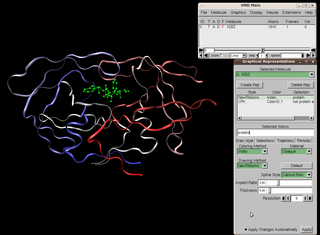
Visual Molecular Dynamics (VMD) is a molecular modelling and visualization computer program. VMD is developed mainly as a tool to view and analyze the results of molecular dynamics simulations. It also includes tools for working with volumetric data, sequence data, and arbitrary graphics objects. Molecular scenes can be exported to external rendering tools such as POV-Ray, RenderMan, Tachyon, Virtual Reality Modeling Language (VRML), and many others. Users can run their own Tcl and Python scripts within VMD as it includes embedded Tcl and Python interpreters. VMD runs on Unix, Apple Mac macOS, and Microsoft Windows. VMD is available to non-commercial users under a distribution-specific license which permits both use of the program and modification of its source code, at no charge.

Iran has a large network of private, public, and state affiliated universities offering degrees in higher education. State-run universities of Iran are under the direct supervision of Iran's Ministry of Science, Research and Technology and Ministry of Health and Medical Education. According to article 3 of the Constitution of the Islamic Republic of Iran, Iran guarantees "free education and physical training for everyone at all levels, and the facilitation and expansion of higher education." IANI representatives say that academics in Iran are "ultimately directed by the regime and military when it comes to specific areas of research". Rana Dadpour, who taught at an Iranian university, said that certain areas of research are directed by the Islamic Revolutionary Guard Corps and could be employed for "surveillance or military purposes".
The Texas A&M Institute of Biosciences and Technology (IBT), a component of Texas A&M Health, and The Texas A&M University System, is located in the world's largest medical center, the Texas Medical Center, in Houston, Texas. The institute provides a bridge between Texas A&M University System scientists and other institutions' researchers working in the Texas Medical Center and the biomedical and biotechnology research community in Houston. It emphasizes collaboration between member scientists and others working in all the fields of the biosciences and biotechnology. IBT encourages its scientists to transfer discoveries made in their laboratories to the clinic and marketplace.

The Max Planck Institute of Biochemistry is a research institute of the Max Planck Society located in Martinsried, a suburb of Munich. The institute was founded in 1973 by the merger of three formerly independent institutes: the Max Planck Institute of Biochemistry, the Max Planck Institute of Protein and Leather Research, and the Max Planck Institute of Cell Chemistry.
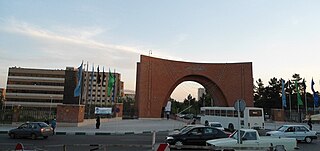
Tarbiat Modares University is a distinguished graduate institution situated in Tehran, Iran. Established in 1982, its primary mission is to cultivate and prepare future university educators. Regarded as one of the premier academic institutions in Iran, Tarbiat Modares University is recognized for its excellence in higher education. Admission is through national-level university exams, and in most programs, is limited to top performers.
The Institute of Biochemistry and Biophysics(IBB) is an Iranian research institute founded in 1976 to conduct research in cellular and molecular biology. It is affiliated with University of Tehran and is located in the university campus.

Institute for Advanced Studies in Basic Sciences (IASBS) also known as Zanjan Graduate University of Basic Sciences is a public advanced research center and university in Zanjan, Iran founded in 1991 by Prof. Yousef Sobouti. The goal of establishing IASBS was to provide a leading research-based institute in advanced science topics for both researchers and students in Iran.

Tehran University of Medical Sciences (TUMS) is the largest and most highly ranked medical university of Iran. In September 2008, Iran's Minister of Health, Treatment, and Medical Education, Lankarani, called TUMS a pioneer in research throughout the country with a noticeable lead over its peer universities.
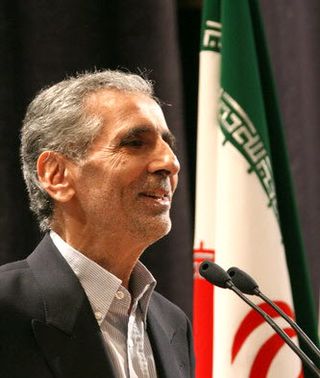
Abbas Shafiee was an Iranian pharmaceutical chemist. He was the president of faculty of pharmacy at Tehran University. He published more than 350 scientific articles in peer-reviewed international journals.
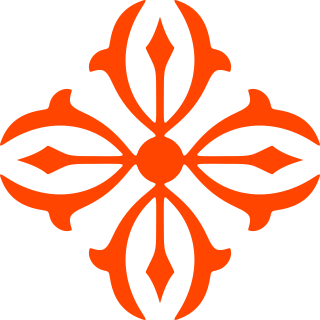
Bose Institute is a premier public research institute of India and also one of its oldest. The Bose Institute Kolkata is a Tier 1 Natural Science Research Institute in India, sharing the podium with India's top natural science research institutes viz., IISc Bangalore, IIT Bombay, NCBS Bangalore and IISER Kolkata. The institute was established in 1917 by Acharya Sir Jagdish Chandra Bose, the father of modern scientific research in the Indian subcontinent. Bose was its director for the first twenty years till his demise. Debendra Mohan Bose, who succeeded the Nobel laureate Sir CV Raman as Palit Professor of Physics at the University of Calcutta, was the director of Bose Institute for the next thirty years. The institute pioneered the concept of interdisciplinary research in Asia and India in sync with global trends.

Mohammad-Nabi Sarbolouki was a distinguished Iranian biophysicist and polymer chemist and one of the most influential individuals behind modern scientific movement in Iran. He was known as the inventor of a DNA vehicle called "dendrosome". Sarbolouki was one of the main founders and pioneers of nano science, biomaterials, biotechnology and biophysics in Iran.

Professor Nils Gunnar Hansson von Heijne, born 10 June 1951 in Gothenburg, is a Swedish scientist working on signal peptides, membrane proteins and bioinformatics at the Stockholm Center for Biomembrane Research at Stockholm University.

According to a report by The Economist, Iran has been ranked 39th for producing $23 billion of industrial products in 2008. From 2008 to 2009 Iran has leaped to 28th place from 69th place in annual industrial production growth rate.

Malek Ashtar University of Technology (MUT) is a public research university of engineering, science in Iran. Founded in 1984, MUT's main campus is located at Tehran, the capital of Iran. Its other campuses are located in Isfahan and Urmia. The university is named after Malik al-Ashtar, one of the most loyal companions of Ali Ibn Abi Talib.
David A. Agard is a professor of biochemistry and biophysics at the University of California, San Francisco. He earned his B.S. in molecular biochemistry and biophysics from Yale University and his Ph.D. in biological chemistry from California Institute of Technology. His research is focused on understanding the basic principles of macromolecular structure and function. He is a scientific director of the Institute for Bioengineering, Biotechnology, and Quantitative Biomedical Research and has been a Howard Hughes Medical Institute (HHMI) investigator since 1986.
Cathy H. Wu is the Edward G. Jefferson Chair and professor and director of the Center for Bioinformatics & Computational Biology (CBCB) at the University of Delaware. She is also the director of the Protein Information Resource (PIR) and the North east Bioinformatics Collaborative Steering Committee, and the adjunct professor at the Georgetown University Medical Center.
Narayanaswamy Srinivasan was an Indian molecular biophysicist and a professor and the head of Proteins: Structure, Function and Evolutionary Group at the Molecular Biophysics Unit of the Indian Institute of Science. He is known for his researches in the fields of computational genomics and protein structure analysis. An elected fellow of the Indian Academy of Sciences and the National Academy of Sciences, India, he is a J. C. Bose National fellow of the Department of Biotechnology and a recipient of the National Bioscience Award for Career Development of the Department of Science and Technology. The Council of Scientific and Industrial Research, the apex agency of the Government of India for scientific research, awarded him the Shanti Swarup Bhatnagar Prize for Science and Technology, one of the highest Indian science awards, in 2007, for his contributions to biological sciences.
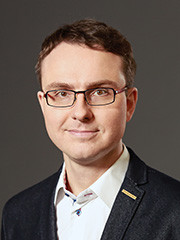
Janusz Marek Bujnicki is a Polish biologist specializing in experimental and computational structural biology, professor of biological sciences, head of the Laboratory of Bioinformatics and Protein Engineering at the International Institute of Molecular and Cell Biology in Warsaw.

Ali Akbar Moosavi-Movahedi is an Iranian Biophysicist, and Biophysical Chemist at the Institute of Biochemistry and Biophysics, University of Tehran. He is the founder of the Iran Society of Biophysical ChemistryArchived 2014-09-04 at the Wayback Machine. He is the fellow of The World Academy of Sciences (TWAS), fellow of Islamic World Academy of Sciences (IAS), and a member of the Islamic Republic of Iran Academy of Sciences.














